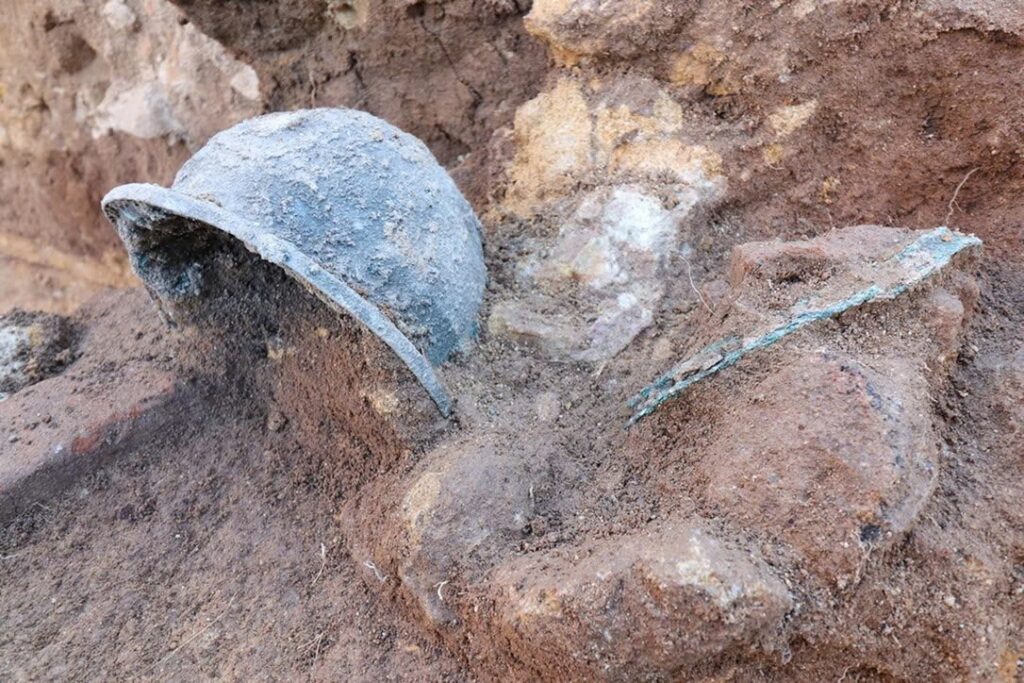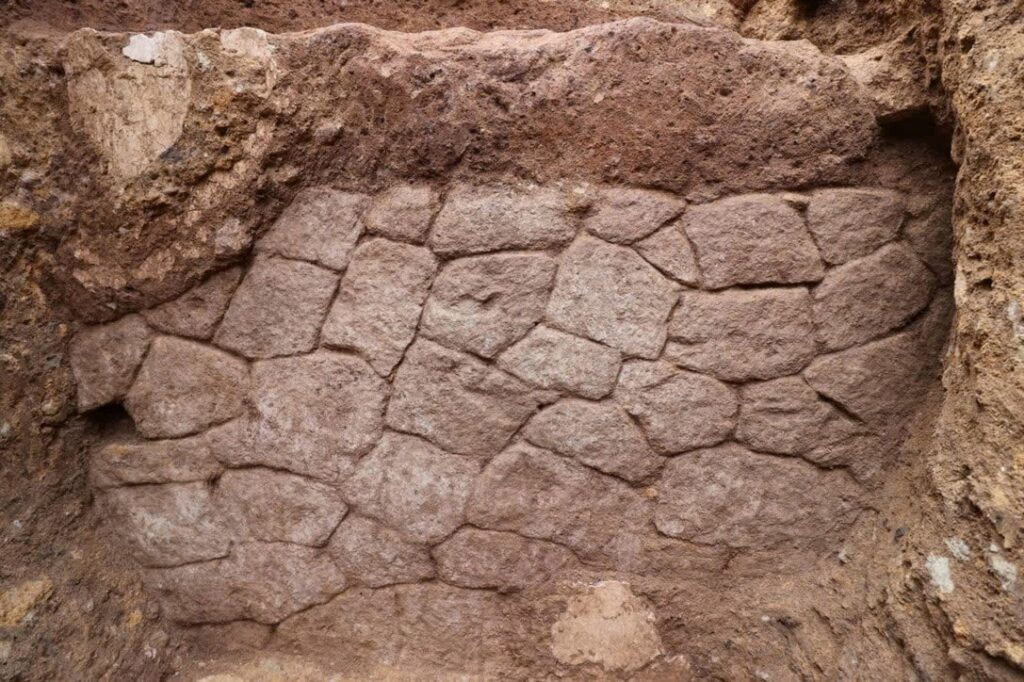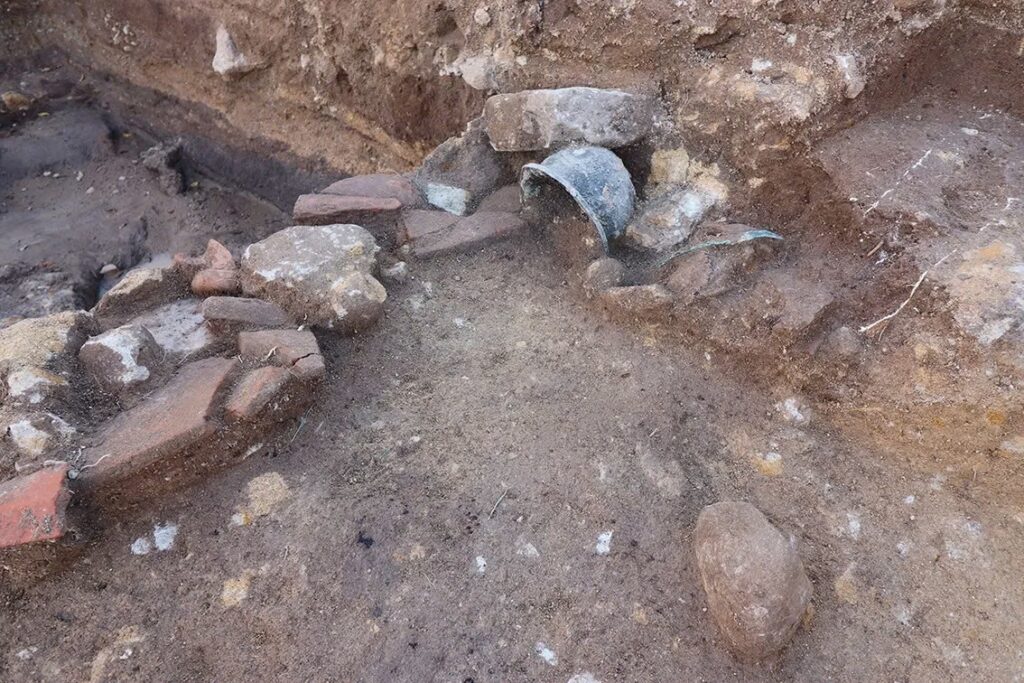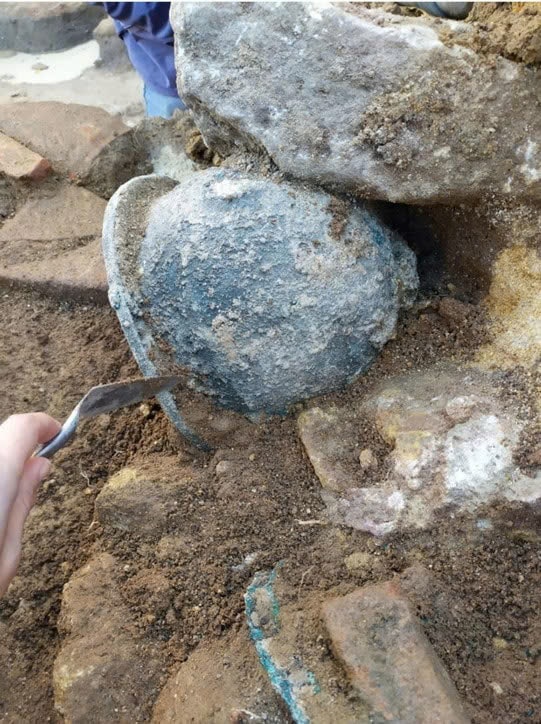A Glimpse into Magna Graecia’s Past
Unveiling the Secrets of Velia’s Acropolis

In a thrilling archaeological discovery, researchers have unearthed ancient warrior helmets and the ruins of a painted brick wall in Velia, southern Italy. This significant find, announced by Italian Culture Minister Dario Franceschini, may be the precursor to a temple dedicated to the goddess Athena.

A Journey Through Time: From Phocaeans to Philosophers
The excavation, led by Francesco Scelza, began last summer atop Velia’s ancient acropolis. It revealed a substantial rectangular building dating back to the 6th century BC, measuring 18 meters long and 7 meters wide. This discovery sheds light on the rich history of Velia, a major settlement in Magna Graecia.

The story of Velia begins with the Phocaeans, Greek colonists who fled their settlement in Corsica following a naval battle against the Etruscans and Carthaginians in 540 BC. These refugees founded Hyele, later known as Elea (or Velia to the Romans), which became renowned as the home of an ancient Greek school of philosophy.
Sacred Offerings and Battle Remnants
The excavation yielded a treasure trove of artifacts, including:
- Two well-preserved helmets
- Vases inscribed with the Greek word for “sacred”
- Metal fragments possibly from ancient weapons
Massimo Osanna, the State Museums Director and former head of Pompeii excavations, suggests these items may have been offerings to Athena, the Greek goddess of war and wisdom, following a crucial naval battle in the nearby Tyrrhenian Sea.

This remarkable discovery not only enriches our understanding of Velia’s history but also provides a fascinating glimpse into the world of Magna Graecia, where Greek culture flourished in southern Italy. As excavations continue, who knows what other secrets this ancient site may reveal about our shared past?
